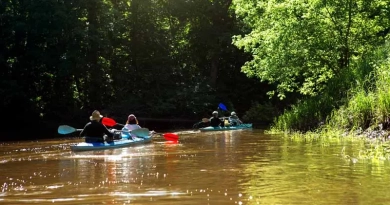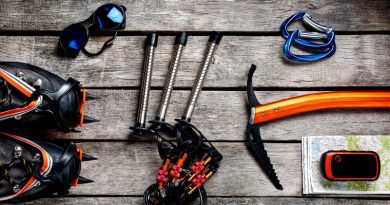
How Can I Prepare My Family For Disaster?
One of the most concerning questions about preparedness for many people is: “How can I prepare my family for a disaster?” It’s a crucial question, one that requires thorough planning and practical steps to ensure the safety and well-being of your loved ones. Here’s a detailed guide to help you prepare your family for any disaster, written in the style of a first-person narrative to provide both information and a sense of personal journey.
When thinking about disaster preparedness, the main concern is ensuring that every family member knows what to do in an emergency. The question, “How can I prepare my family for a disaster?” is not just about gathering supplies but about creating a comprehensive plan that includes communication, safety, and practice drills. It’s about being ready for anything, from natural disasters like earthquakes and hurricanes to man-made crises such as power outages or civil unrest.
Creating a Family Emergency Plan
The first step is to create a family emergency plan. This plan should cover:
-
Communication
In the chaos of a disaster, communication can be a lifeline. Establishing a reliable method for family members to contact each other is crucial. Here’s a detailed approach to ensure your family stays connected:
- Primary and Secondary Contacts:
- Phone Calls and Texts: While phone calls are immediate, they might not always be reliable during a disaster due to network overloads or damage to infrastructure. Text messages often get through even when networks are congested.
- Social Media and Messaging Apps: Platforms like Facebook, WhatsApp, and Twitter can be invaluable for sharing updates and checking in. Ensure everyone in the family knows how to use these apps and has them installed on their devices.
- Emergency Contacts:
- Local and Out-of-Area Contacts: Designate an out-of-area contact person. Sometimes, it’s easier to make a long-distance call than a local one during a disaster. Each family member should know how to reach this person.
- Emergency Services: Ensure all family members have the contact numbers for local emergency services, hospitals, and utilities programmed into their phones.
- Meeting Points:
- Designated Meeting Spots: Choose two meeting spots—one close to your home in case of a sudden emergency like a fire, and another outside your neighborhood in case you cannot return home.
- Maps and Directions: Make sure everyone knows how to get to these meeting spots. Provide maps and practice the routes regularly.
- Communication Plan:
- Written Plan: Document your communication plan and ensure each family member has a copy. Include all necessary phone numbers, meeting spot addresses, and instructions on what to do if separated.
Evacuation Routes
Identifying and practicing evacuation routes is essential to ensure your family can leave quickly and safely. Here’s a comprehensive approach:
- Home Evacuation:
- Multiple Exits: Identify at least two exits from each room in your home, such as doors and windows. Make sure windows are easy to open and everyone knows how to use them.
- Clear Paths: Ensure that escape routes are free of obstructions. Regularly check and clear these paths to maintain easy access.
- Neighborhood and Community Routes:
- Safe Routes: Identify the safest routes out of your neighborhood. This could involve avoiding low-lying areas prone to flooding or routes that could become congested.
- Alternative Routes: Plan for various scenarios, including blocked roads or damaged infrastructure. Have alternative routes mapped out and practiced.
- Special Considerations:
- Pets: Plan for the evacuation of pets. Have carriers, leashes, and supplies ready to go.
- Vehicles: Ensure your vehicles are always at least half-full of fuel and have emergency kits inside. Know where your keys are and keep them accessible.
Responsibilities
Assigning specific tasks to each family member ensures everyone knows what to do during a disaster. Here’s how to structure responsibilities effectively:
- Role Assignments:
- Emergency Kit: Designate one person to grab the emergency kit. This kit should be in a known, accessible location.
- Children and Pets: Assign someone to assist young children or pets. This person ensures they are safely evacuated and have what they need.
- Skills and Training:
- First Aid: Ensure at least one family member is trained in first aid and CPR. This person can handle minor injuries and guide others.
- Utility Shut-Offs: Train a family member to know how and when to shut off utilities like gas, water, and electricity to prevent further hazards.
- Practice Drills:
- Regular Drills: Conduct regular emergency drills to ensure everyone knows their roles and can execute them efficiently. Practice different scenarios to cover various types of disasters.
- Documentation:
- Written Responsibilities: Document each person’s responsibilities and keep a copy in your emergency kit. Review and update this document as needed, especially if family dynamics change.
- Primary and Secondary Contacts:
Assembling a Disaster Supply Kit
A well-stocked disaster supply kit is essential. This kit should include:
Food:
- Non-Perishable Items: Stock up on foods that don’t require refrigeration, cooking, or much preparation. Good choices include canned meats, fruits, vegetables, peanut butter, granola bars, and dried fruits.
- Special Dietary Needs: Consider any dietary restrictions or allergies within your family. Include gluten-free, dairy-free, or low-sodium options as needed.
- Easy-to-Prepare: Opt for ready-to-eat canned meals or freeze-dried foods that can be easily rehydrated.
- Variety and Comfort Foods: Include a mix of nutritious items and comfort foods like chocolate or candy to help maintain morale during stressful times.
Water:
- Quantity: Store at least one gallon of water per person per day for at least three days, though a two-week supply is recommended. This amount covers drinking and basic hygiene needs.
- Storage: Use food-grade water storage containers. Ensure they are clean, sealed tightly, and stored in a cool, dark place.
- Water Purification: Include water purification tablets or a portable water filter to ensure access to safe drinking water if your supply runs out.
First Aid Kit
A comprehensive first aid kit is crucial for handling minor injuries and common illnesses during a disaster. Your kit should include:
- Basic Supplies: Adhesive bandages, gauze pads, antiseptic wipes, and adhesive tape.
- Medications: Over-the-counter pain relievers (such as ibuprofen or acetaminophen), anti-diarrheal medications, and any prescription medications.
- Tools: Tweezers, scissors, a digital thermometer, and a first aid manual.
- Specialty Items: Items like a tourniquet, splint, and instant cold packs for more serious injuries.
- Personal Health Items: Include items specific to family members’ health needs, such as hearing aid batteries or asthma inhalers.
Tools and Supplies
Having the right tools and supplies can make a significant difference in an emergency:
- Flashlights: Include LED flashlights, headlamps, and extra batteries.
- Multi-Tool: A versatile multi-tool that includes a knife, pliers, screwdrivers, and more.
- Manual Can Opener: Essential for opening canned food without electricity.
- Battery-Powered or Hand-Crank Radio: To stay informed about emergency updates and weather conditions.
- Plastic Sheeting and Duct Tape: Useful for creating a makeshift shelter or sealing windows and doors.
Personal Items
Personal items ensure that each family member’s needs are met:
- Medications: A seven-day supply of prescription medications, along with any over-the-counter medications that may be needed.
- Important Documents: Copies of IDs, insurance policies, bank account records, and emergency contact information. Store these in a waterproof, portable container.
- Personal Hygiene: Items such as soap, hand sanitizer, toothbrushes, toothpaste, and feminine hygiene products.
- Comfort Items: Consider including books, games, or other items to help pass the time and reduce stress.
Clothing and Bedding
Ensuring that each family member has appropriate clothing and bedding is vital:
- Warm Clothes: Include layers of warm clothing, such as thermal underwear, sweatshirts, and waterproof jackets.
- Sturdy Shoes: Each person should have a pair of sturdy, comfortable shoes suitable for walking long distances if necessary.
- Blankets and Sleeping Bags: Opt for warm, compact sleeping bags and thermal blankets. These are especially important if you live in a cold climate.
- Extra Clothing: Pack a complete change of clothes for each family member, including underwear and socks.
Additional Tips
- Regular Updates: Check and update your disaster supply kit every six months. Replace expired items and adjust the contents based on seasonal needs and family changes.
- Storage Locations: Keep your kit in a designated place where it is easily accessible. Consider having smaller kits for your car and workplace.
- Practice: Familiarize all family members with the contents of the kit and how to use them. Practice emergency drills to ensure everyone knows their roles and responsibilities.
The Importance of Regular Training and Drills
It’s not enough to simply have a disaster plan and the necessary supplies. Regular training and drills ensure that everyone in the family knows their roles and responsibilities, can perform essential tasks under stress, and can adjust to any unforeseen changes in the plan. Practicing your emergency plan with your family regularly—ideally every six months—helps reinforce these skills, making them second nature.
Benefits of Regular Drills:
- Memory Retention: Regular practice helps family members remember what to do in an emergency, reducing panic and confusion.
- Plan Refinement: Drills allow you to identify any weaknesses or gaps in your plan, giving you the opportunity to refine and improve it.
- Confidence Building: Knowing that everyone is well-practiced builds confidence and reduces anxiety about potential disasters.
Key Training Components
First Aid and CPR
First aid and CPR are critical skills that can save lives during an emergency. Here’s how to ensure everyone in your family is prepared:
- Classes and Certification: Enroll in first aid and CPR classes offered by organizations like the Red Cross, FEMA, or local community centers. Ensure all family members, including older children, take these courses.
- Regular Refresher Courses: Skills can fade over time. Schedule regular refresher courses to keep everyone up-to-date.
- Hands-On Practice: Incorporate hands-on practice into your drills. Set up scenarios where family members need to treat a wound, perform CPR, or manage other common injuries.
Fire Drills
Fire drills are essential for ensuring everyone can evacuate the home quickly and safely in case of a fire. Here’s how to conduct effective fire drills:
- Multiple Exits: Make sure everyone knows at least two ways to exit each room in your home. Practice using these exits, especially if they involve windows or escape ladders.
- Designated Meeting Spot: Choose a safe meeting spot outside your home where everyone will gather after evacuating. This helps ensure everyone is accounted for.
- Smoke Alarms: Test your smoke alarms regularly and incorporate them into your drills to simulate real-life conditions.
- Speed and Safety: Time your drills to ensure everyone can evacuate quickly, but also emphasize the importance of safety, such as staying low to avoid smoke inhalation.
Communication Drills
Effective communication can make all the difference in a disaster. Here’s how to ensure your communication plan is solid:
- Primary and Backup Methods: Test both primary and backup communication methods, such as phone calls, texts, social media, and emergency radios.
- Emergency Contacts: Ensure everyone knows how to contact local and out-of-area emergency contacts. Practice using these contacts during drills.
- Meeting Spots: Reiterate the importance of your designated meeting spots and ensure everyone can find them. Practice navigating to these spots from different locations.
- Realistic Scenarios: Simulate different types of disasters and practice how you would communicate in each scenario. This could involve power outages, network failures, or being in different locations when the disaster strikes (American Red Cross).
Implementation and Resources
To effectively implement these training components, you’ll need the following resources:
- First Aid and CPR Training: Contact the Red Cross, FEMA, or local health organizations for training schedules and certification courses.
- Fire Drill Supplies: Ensure you have escape ladders, working smoke alarms, and a clear plan for evacuation routes.
- Communication Tools: Maintain updated contact lists, ensure all devices are charged, and have backup communication methods like radios.
- Practice Schedule: Set up a regular schedule for drills, ideally every six months, and make adjustments based on the outcomes of each drill (Habitat for Humanity).
The Best Solution and How to Implement It
Step-by-Step Implementation
-
Develop Your Plan
Gather Your Family and Discuss Potential Disasters
The first step in preparing for any disaster is to gather your family and have an open discussion about the types of disasters that could occur in your area. This could include natural disasters like earthquakes, hurricanes, floods, and wildfires, as well as man-made events such as power outages or hazardous material spills.
- Identify Potential Disasters:
- Local Hazards: Research and identify the most likely disasters in your region. FEMA’s website and local government resources can provide valuable information on regional risks.
- Personal Circumstances: Consider personal factors such as family members with special needs, pets, or unique vulnerabilities.
Create a Detailed Emergency Plan
Your emergency plan should cover key areas, including communication, evacuation, and responsibilities.
- Communication:
- Primary and Secondary Methods: Establish primary and backup methods for contacting each other, such as phone calls, text messages, and social media. Ensure everyone knows how to use these methods.
- Designated Meeting Spots: Choose safe locations where family members can meet if separated. One spot should be near your home, and another should be outside your neighborhood in case of evacuation.
- Evacuation:
- Escape Routes: Identify multiple exit routes from your home and practice using them. Ensure paths are clear and accessible.
- Community Evacuation Routes: Learn the designated evacuation routes in your community. Have maps and practice driving these routes under various conditions.
- Responsibilities:
- Assign Tasks: Assign specific roles to each family member. For instance, one person may be responsible for grabbing the emergency kit, another for securing pets, and another for helping younger children evacuate.
- Documentation: Write down each person’s responsibilities and review them regularly. Keep a copy of the plan in your emergency kit (Home) (Habitat for Humanity).
Assemble Your Kit
Using a checklist ensures that you gather all necessary supplies for your disaster kit. Here’s how to do it effectively:
- Gather Supplies:
- Food and Water: Stock at least a three-day supply of non-perishable food and one gallon of water per person per day.
- First Aid Kit: Include comprehensive medical supplies to handle minor injuries and common illnesses.
- Tools and Supplies: Flashlights, batteries, a multi-tool, a manual can opener, and a battery-powered or hand-crank radio.
- Personal Items: Medications, important documents (copies of IDs, insurance policies), and personal hygiene items.
- Clothing and Bedding: Warm clothes, sturdy shoes, and blankets.
- Storage:
- Accessible Location: Store your emergency kit in an easily accessible location known to all family members. Consider having smaller kits in your car and workplace.
- Regular Updates: Check your kit every six months and replace expired items. Adjust the contents based on seasonal needs and family changes.
Educate and Train
Education and regular practice are crucial for ensuring that your family knows what to do during an emergency.
- First Aid and CPR Classes:
- Enroll in Classes: Take first aid and CPR courses offered by the Red Cross or local health organizations. Ensure that all family members, including older children, receive training.
- Refresher Courses: Regularly update your skills through refresher courses to maintain proficiency.
- Regular Drills:
- Fire Drills: Practice evacuating your home in case of fire. Ensure everyone knows how to exit safely and where to meet outside.
- Communication Drills: Test your communication plan to ensure that everyone can reach each other and knows the meeting points. Simulate different disaster scenarios and practice how you would respond.
Stay Informed
Keeping up-to-date with local disaster risks and alerts is vital for timely and effective responses.
- Local Alerts and Notifications:
- Sign Up for Alerts: Register for local emergency alert systems and notifications. Many communities offer text or email alerts for various types of emergencies.
- Social Media and News: Follow local news outlets and emergency management agencies on social media for real-time updates.
- NOAA Weather Radio:
- Purchase a NOAA Radio: These radios broadcast official warnings, watches, advisories, and forecasts 24/7. They are especially useful for receiving updates when other communication methods fail.
- Regular Checks: Ensure your NOAA radio is functional and has fresh batteries or a reliable power source (U.S. Department of Homeland Security) (Habitat for Humanity).
- Identify Potential Disasters:
Resources and Tools Needed
- NOAA Weather Radio: For real-time weather alerts.
- Emergency Kit Supplies: Non-perishable food, water, medical supplies, tools, and personal items.
- Organizations like the Red Cross offer classes in first aid and CPR
- Emergency Plan Templates: Available from Ready.gov and FEMA to help structure your plan.
Conclusion
Preparing your family for a disaster involves more than just collecting supplies; it’s about building a robust plan and ensuring everyone knows their role. Regular practice, staying informed, and having a well-stocked emergency kit are key to facing any crisis with confidence.
Preparation is about peace of mind and resilience. Stay prepared, stay safe, and embrace the journey with confidence. For more detailed information and resources, you can visit Ready.gov, FEMA, and the Red Cross.






